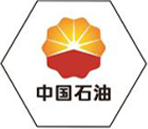
Nov . 15, 2024 20:02
Back to list
مخفض ضغط الغاز الطبيعي
Natural Gas Pressure Regulators An Essential Component of Distribution Systems
Natural gas is an important energy source for homes, industries, and power plants across the globe. The safe and efficient delivery of this vital resource hinges significantly on the effectiveness of pressure regulation in gas distribution systems. Pressure regulators are the unsung heroes of gas transportation, ensuring that the pressure of natural gas is kept within safe operational limits.
Understanding Natural Gas Pressure Regulators
A natural gas pressure regulator is a mechanical device designed to control and stabilize the pressure of gas as it moves through pipelines and into homes or industrial applications. High-pressure gas is generated during extraction and transportation, and without regulation, this pressure could cause damage to pipelines and appliances, leading to gas leaks and potentially dangerous situations.
Regulators work by automatically adjusting the flow of gas to maintain a desired output pressure. They consist of various components, including a diaphragm, spring, and orifice, which work together to achieve this regulation. When gas enters the regulator, it pushes against the diaphragm, which compresses the spring. As the pressure increases, the diaphragm moves, adjusting the size of the orifice and allowing gas to flow at the required rate.
Types of Natural Gas Pressure Regulators
There are primarily two types of natural gas pressure regulators first-stage and second-stage regulators.
- First-stage regulators reduce the high pressure of gas coming from the transmission line to an intermediate pressure level. This is typically installed at the entry point to a distribution system.
.
Importance of Calibration and Maintenance
مخفض ضغط الغاز الطبيعي

Proper calibration and maintenance of natural gas pressure regulators are crucial for safe and efficient gas distribution. Regular inspections help identify potential issues, such as wear and tear or blockages that can affect performance. Technicians follow safety protocols to calibrate the regulators according to the specific requirements of the distribution system, ensuring that pressure levels remain consistent.
Failures in regulation can lead to catastrophic results, including explosions and extensive damage to infrastructure. Thus, operators of gas distribution systems must prioritize routine maintenance and adhere to regulatory standards set by local and international safety organizations.
Innovations in Gas Pressure Regulation
Recent advancements in technology have greatly improved the efficiency and functionality of natural gas pressure regulators. Modern electronic pressure regulators offer enhanced precision by using sensors and control algorithms to monitor and adjust pressure levels in real-time.
Additionally, these innovations contribute to minimizing gas wastage and improving overall energy efficiency within distribution systems. Smart regulators can communicate with other components of the gas system, allowing for better data collection and management, which leads to improved decision-making regarding gas supply and demand.
The Future of Natural Gas Pressure Regulation
As the world shifts towards a more sustainable energy landscape, the role of natural gas is becoming increasingly significant. With a growing emphasis on reducing carbon emissions, natural gas is often seen as a transitional fuel between fossil fuels and renewable energy sources. As such, the significance of efficient and effective gas pressure regulation cannot be overstated.
Investments in infrastructure and technology will continue to drive innovation in pressure regulation, ensuring that natural gas remains a safe and reliable energy source for years to come. The integration of renewable natural gas (RNG) into existing distribution systems may also require further advancements, as these gases may differ in pressure and composition compared to traditional natural gas.
Conclusion
Natural gas pressure regulators play a crucial role in the safe and efficient delivery of gas to consumers. Their importance cannot be overlooked, especially as society increasingly relies on natural gas for energy. With continued technological advancements and a commitment to safety, the future of natural gas delivery appears poised for growth and innovation, making pressure regulation a vital area of focus for energy providers worldwide.
Next:
Latest news
-
Safety Valve Spring-Loaded Design Overpressure ProtectionNewsJul.25,2025
-
Precision Voltage Regulator AC5 Accuracy Grade PerformanceNewsJul.25,2025
-
Natural Gas Pressure Regulating Skid Industrial Pipeline ApplicationsNewsJul.25,2025
-
Natural Gas Filter Stainless Steel Mesh Element DesignNewsJul.25,2025
-
Gas Pressure Regulator Valve Direct-Acting Spring-Loaded DesignNewsJul.25,2025
-
Decompression Equipment Multi-Stage Heat Exchange System DesignNewsJul.25,2025

